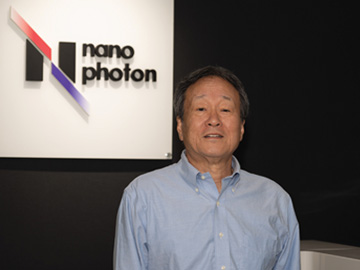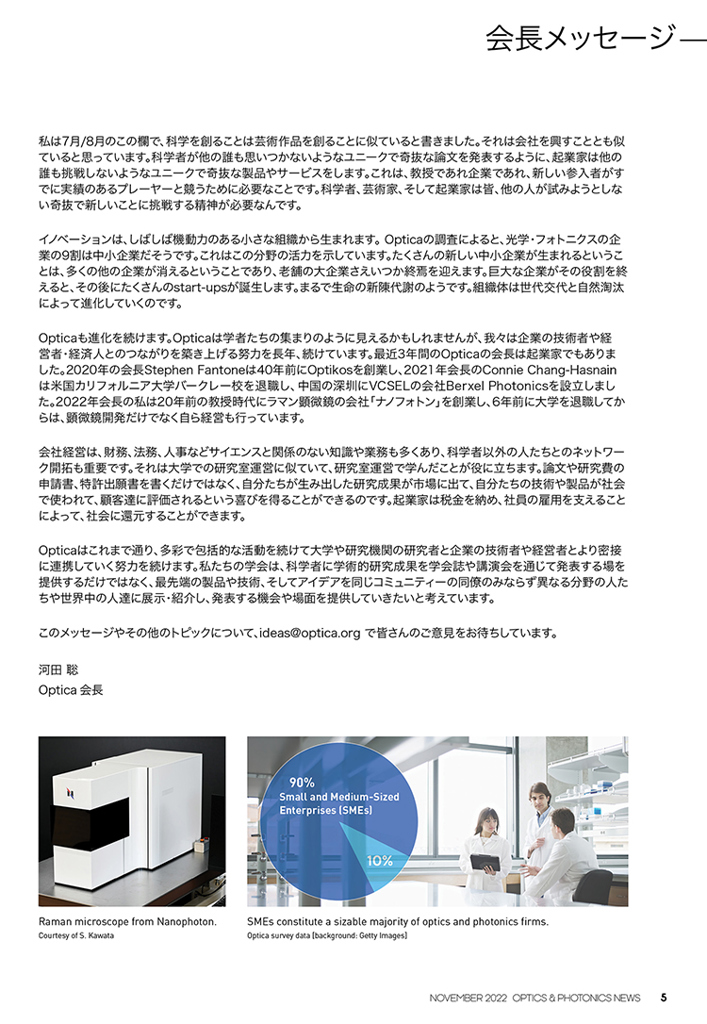
In the July/August OPN, I wrote that creating science is akin to creating works of art. And starting up a company, I believe, is akin to both. Just as a scientist might write a unique or even strange paper no one else had thought of, an entrepreneur might start a company that offers a unique or even strange product or service no other company has attempted. This allows the newcomer to compete against established players, whether professors or companies. Scientists, artists and entrepreneurs alike must have the spirit to try new things, and to attempt what others will not.
This kind of innovation often takes place in small, agile firms. According to an Optica survey, 90% of optics and photonics companies are small and medium-sized enterprises. This suggests the sector’s vitality—but it also is the result of the end of many other companies, and even the occasional termination of large, well-established enterprises. While it does not happen every day, sometimes a giant company ends its role and is followed by many start-ups. This is similar to the metabolism of life, in which organisms evolve through generational change and natural selection.
Optica, too, continues to evolve—and, while it is sometimes viewed as an academic society, it continues its long-standing efforts to forge connections among corporate engineers and business persons as well. It is interesting to note that, for the past three years, the society’s presidents have also been entrepreneurs. The 2020 president, Stephen Fantone, founded Optikos 40 years ago. Connie Chang-Hasnain, the 2021 president, recently retired from the University of California, Berkeley, USA, and founded Berxel Photonics, a VCSEL company based in Shenzhen, China. And I, the society’s 2022 president, founded the Raman microscope company Nanophoton 20 years ago while a professor at Osaka University in Japan. Since retiring from the university six years ago, I have been in charge not only of Nanophoton’s microscope development but also of its management.
Running a company requires mastery of many non-science subjects—finance, legal affairs, human resources—as well as building a network with people who often are not scientists. Nevertheless, it is much like running a university research laboratory, and the lessons of doing so can be useful. In addition to writing papers, applications for research funding, and patent applications, there is also the pleasure of providing the results of our work to the market, where our technologies and products are used and, hopefully, appreciated by customers. And the entrepreneur gives back to society by paying taxes and supporting the employment of fellow citizens.
As Optica continues its ongoing effort to become ever more diverse and inclusive, our hope is that scientists at universities and research institutes will work ever more closely with industry engineers and business persons. Our society is not only about providing a place for scientists to present academic papers through journals and conferences, important as that is. It is also about offering scope for members of the community to exhibit and present their scientific products, technologies and best ideas—not only to their peers, but to others in different fields and to the world at large.
I would welcome your thoughts on this message or other topics at ideas@optica.org.
—Satoshi Kawata,
Optica President
A Japanese translation of this message appears below.

